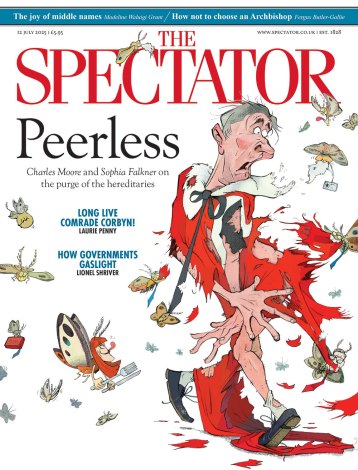In September 1954, Albert Speer decided to walk from Berlin to Heidelberg, a distance of 620 kilometres. As Hitler’s architect still had more than a decade of a prison sentence in Spandau to serve, this might have been seen as problematic. But not so. Speer mapped out a circular course of 270 metres in the prison’s garden, and proceeded to walk it over and over again. He completed the journey in a few months, having done 2,296 laps of the course. Seeking a new destination, he rejected the suggestion of fellow prisoner Rudolf Hess — Asia — on the grounds that it would mean passing through communist countries.
This tale is one of many gathered together by lifelong walker Geoff Nicholson in a book whose subtitle,‘The History, Science, Philosophy, Literature, Theory and Practice of Pedestrianism’, reveals how widely his brief runs (if that word doesn’t imply too great a pace). Prison is one of the few places Nicholson himself hasn’t walked. His list includes deserts, cities, countryside, mountains, cemeteries, even Harrods, in a job he hated (‘I discovered that a man who displayed a sense of purpose and carried a piece of paper in his hand could walk just about anywhere in the store and everybody would always assume he was going about his legitimate business’).
No fan of overly contrived walks, he displays the same relaxed attitude to the construction of this book, interweaving references to de Quincey and Dickens with stories of Led Zeppelin’s John Paul Jones, who was arrested for walking in Los Angeles, and P.G. Wodehouse, who got strange looks for the same reason: ‘even the hookers don’t walk in L.A.’, he was told. Nicholson also conducts walks specially for the book, for instance, several times up and down Oxford Street to see how it changes through the day, and interviews like-minded types such as Iain Sinclair.
What makes this book so refreshing is Nicholson’s refusal (pace Sinclair himself, an exponent of the currently fashionable ‘psychogeography’) to look for meaning where there is none. To paraphrase Freud on cigars, sometimes a walk is just a walk, and this book never forgets that. Which doesn’t make it anything as lightweight as a miscellany; Nicholson writes movingly on the role of walking in his life, for example how he has inherited his father’s inability to see a no entry sign without disobeying it. And as a novelist he’s well placed to analyse the connections between creativity and walking, both literal (‘when I need to work out a plot point …going for a walk will usually clarify matters’) and metaphorical:
With writing, as with walking, you often find that you’re not heading exactly where you thought you wanted to go …you have to accept that’s just fine, a necessary, and not wholly unenjoyable, part of the process.
Coupled with the nuggets dispensed along the way — Velcro was invented by a dog-walker who noticed the cockleburs sticking to his pet’s coat — Nicholson’s insights make reading this book like going for a stimulating walk with a pleasant companion.





Comments